When asked about the technologies growers are looking to invest in this year, most farmers selected data and analytics; climate control systems ranked second.
Automation Is Coming…and 9 Other Things You Need to Know About Indoor Farming
Contributed by | Agrilyst
Reprinted with permission from Agrilyst:
Last year, we set out to provide detailed insight about the state of the indoor farming industry today — what growers are doing, their challenges, and how they see their field changing over the next few years. With that, the State of Indoor Farming was created.
This year, our report provides not only an outlook of the industry, but also an updated analysis of the industry following our 2016 report. We received over 150 responses from 8 countries, with 81% coming from the United States, 12% coming from Canada, and the remainder coming from other countries.
You can check out the full State of Indoor Farming report here.
If you don’t have time to dig deep, don’t worry. Here are the 10 things you need to know:
1. Automation is exciting.
Labor makes up a huge portion of an indoor farmer’s budget (49% of a hydroponic operation), so finding ways to cut down on those cost is important. As a result, automation topped the list of technologies farmers are most excited about.
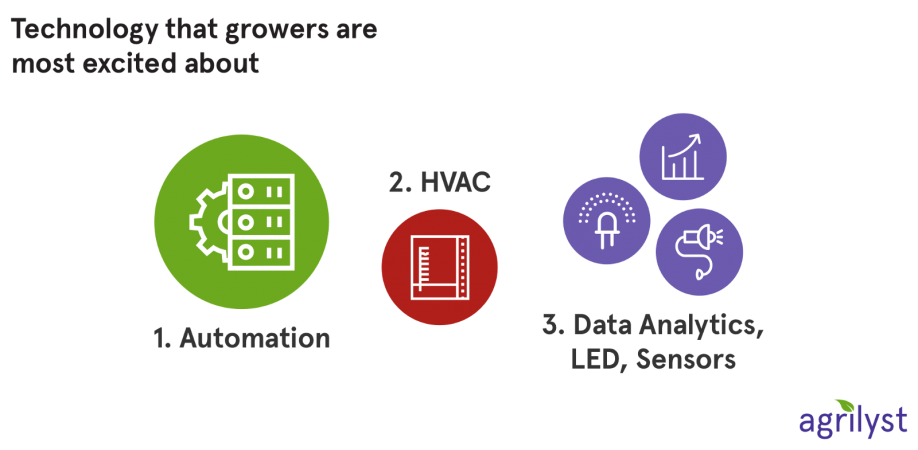
2. On the flip side, farmers think container farms are overhyped.
Regardless of its recent growth in the last few years, container farms came in at number one on the list of technologies responding farmers thought were overhyped. LEDs came in both second on the list of things growers think are overhyped as well as tied for third on the list of technologies farmers were most excited about.
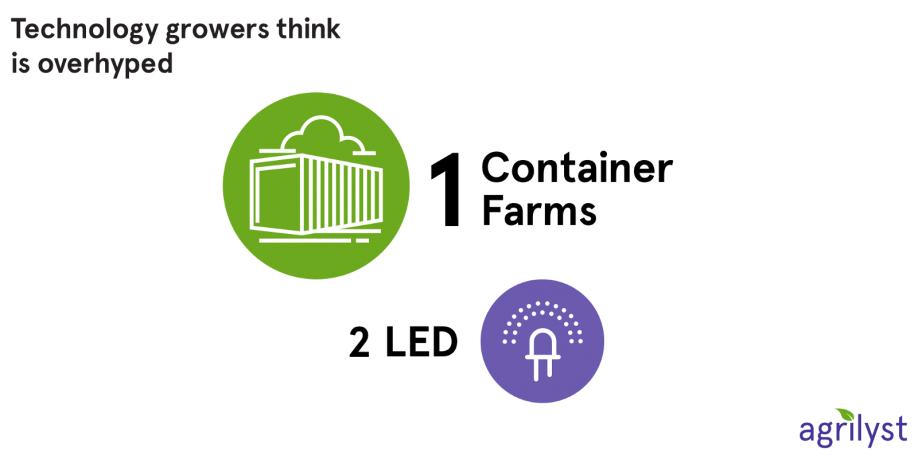
3. Indoor agriculture isn’t the same as urban farming.
This is a big misconception. Indoor farms typically locate close to the point of sale or where efficiency can be maximized, which is not just in urban areas. This is one of the major benefits of indoor farming. Because the farmer has more control over climate, they can choose to locate a farm wherever it makes the most sense.
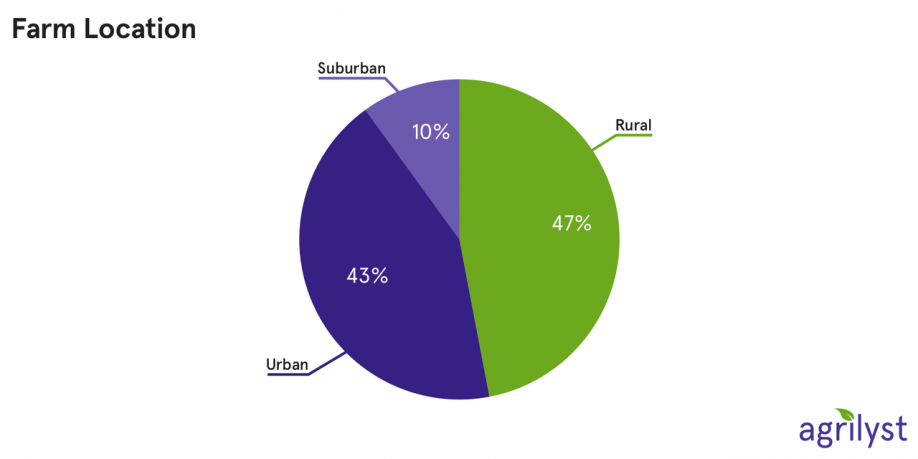
4. Most indoor farms are producing 2 or more crops in their space.
80% of respondents to our latest SOIF survey grow at least two crops. Because growers have the ability to create microclimates within the growing area, they can optimize for more than one type of crop. Below are the five most common crops grown by the responding farmers.
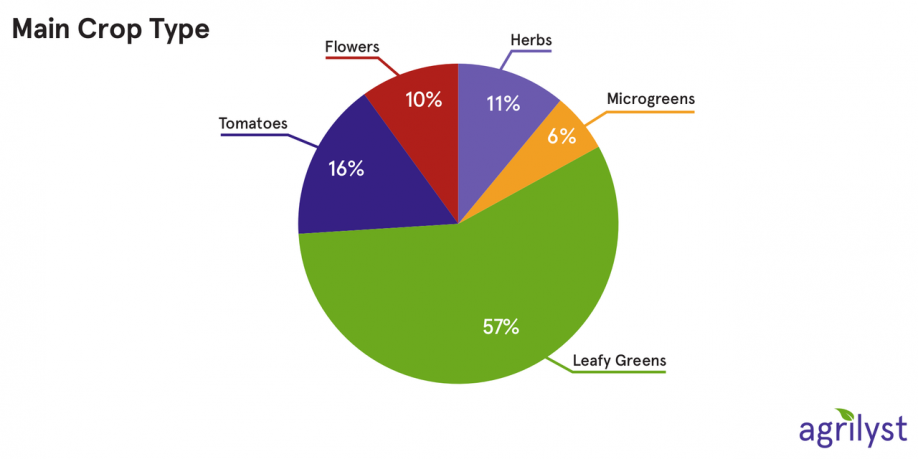
5. Indoor agriculture produces higher yields compared to conventional farming.
Enclosing facilities gives farmers the ability to create ideal growing environments. As a result, farmers can grow a crop from seed to harvest in less time and produce higher yields.
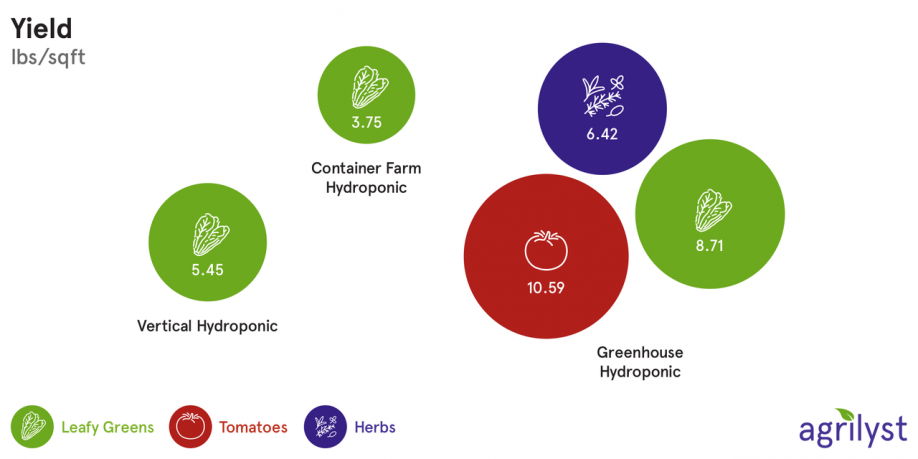
6. Leafy greens and microgreens have the highest profit margin.
On average, leafy greens and microgreens had the highest profit margin for responding farmers in 2017, at 40% across various facility and system types.
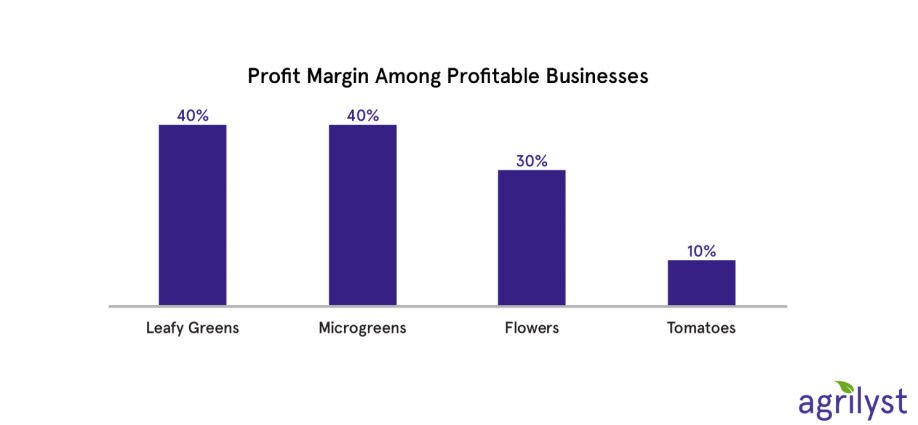
7. Vertical farms use a lot of energy.
Artificial lighting is a key component to vertical farming operations. Growers run their lights approximately 16 hours per day, every day, all year round. As a result, expect energy to account for a large percentage of your operating costs. Greenhouses use energy too. Most of the energy consumption in a greenhouse comes from heating and cooling costs.
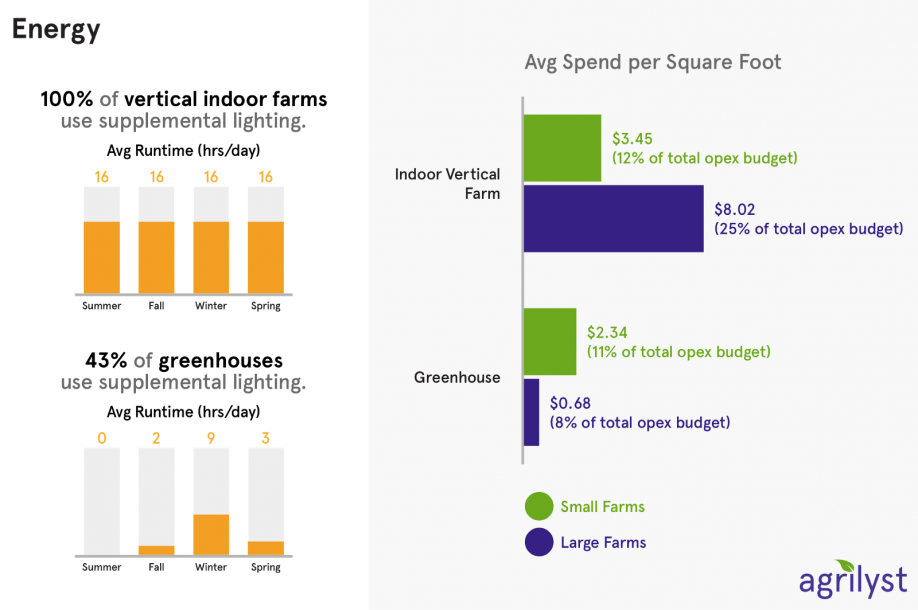
8. Growers are innovative.
We asked growers if they would buy technology from a startup and 78% indicated they would. Most growers specified they don’t want to be “beta testers” but they recognize the need to innovate. The key for farmers is trusting technology and not buying new technologies that don’t directly benefit their farm.
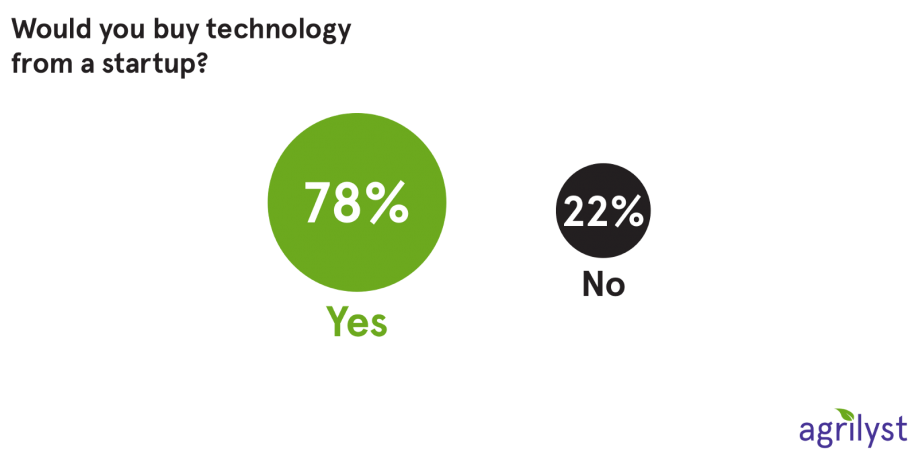
9. 2018 will be the year of data and analytics.
When asked about the technologies growers are looking to invest in this year, most farmers selected data and analytics; climate control systems ranked second. If you are going to run a profitable farm in 2018, investing in a technology stack is a must.
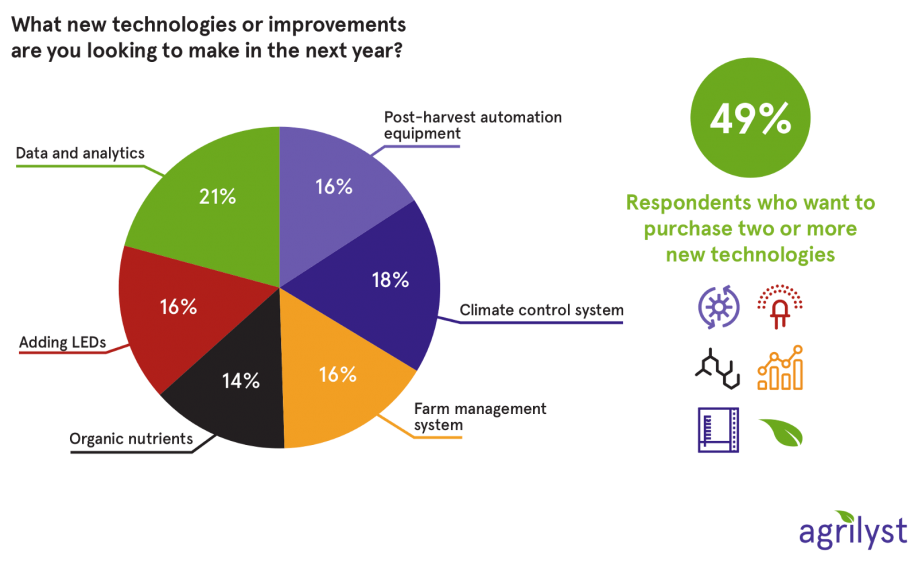
10. Profitability is the number one goal for growers in 2018.
When asked about their number one goal for 2018, 46% of farmers indicated either increasing profitability or revenue. For an additional 7%, the primary goal is decreasing costs, which takes financial-related goals to 53%.
Special thanks to our survey partners: Urban Ag News, State of the Soil, and Cornell University.
The content & opinions in this article are the author’s and do not necessarily represent the views of AgriTechTomorrow
Comments (0)
This post does not have any comments. Be the first to leave a comment below.
Featured Product

